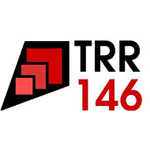
Seminar über Theorie der kondensierten Materie / TRR146 Seminar
Feb. 15, 2008 at
1:15 p.m.
in
Medienraum
F. Schmid
friederike.schmid@uni-mainz.de
P. Virnau
virnau@uni-mainz.de
L. Stelzl
lstelzl@uni-mainz.de
Crystal Phases and Glassy Dynamics in Monodisperse Hard Ellipsoids
Patrick Pfleiderer (Institut für Physik, Johannes Gutenberg-Universität Mainz)
Hard ellipsoids serve as an elegant model system for granular materials, and colloidal and molecular liquids, solids, and glasses. We present a Monte Carlo simulation study on the crystalline phases of hard ellipsoids of revolution. For aspect ratios greater than 3 we have found a novel crystal phase, which replaces the previously suggested stretched-fcc phase [Frenkel and Mulder, Mol. Phys. 55, 1171 (1985)].
The crystal possesses a rheological specialty: The angle of inclination of the lattice, beta, is a very soft degree of freedom, while the two right angles are stiff. The close-packed version of this crystal is a specimen of the family of superdense packings recently reported [Donev et al., Phys. Rev. Lett. 92, 255506 (2004)]. Our update of the phase diagram is relevant for studies of nucleation and glassy dynamics of colloidal suspensions of ellipsoids; the rheology may inspire new materials with tailor-made properties.
In the second part, we present a computer simulation study of slow dynamics in suspensions of hard ellipsoids. In these systems one can study the interplay of orientational and positional degrees of freedom.
For almost spherical ellipsoids, there is a first order transition from a fluid phase to a rotator phase, i.e. a phase characterized by positional order and orientational disorder. When overcompressing the fluid phase into the rotator regime, we observe glassy dynamics both in positional and orientational degrees of freedom. This is apparent from two-step relaxation in positional and orientational correlators, and from super-Arrhenius slowing down of diffusion and relaxation. We also find that flipping modes, allowing the ellipsoids to turn upside-down, are not slowed down significantly in the studied region. We compare our results to mode-coupling theory [Letz et al., Phys. Rev. E 62, 5173 (2000)].